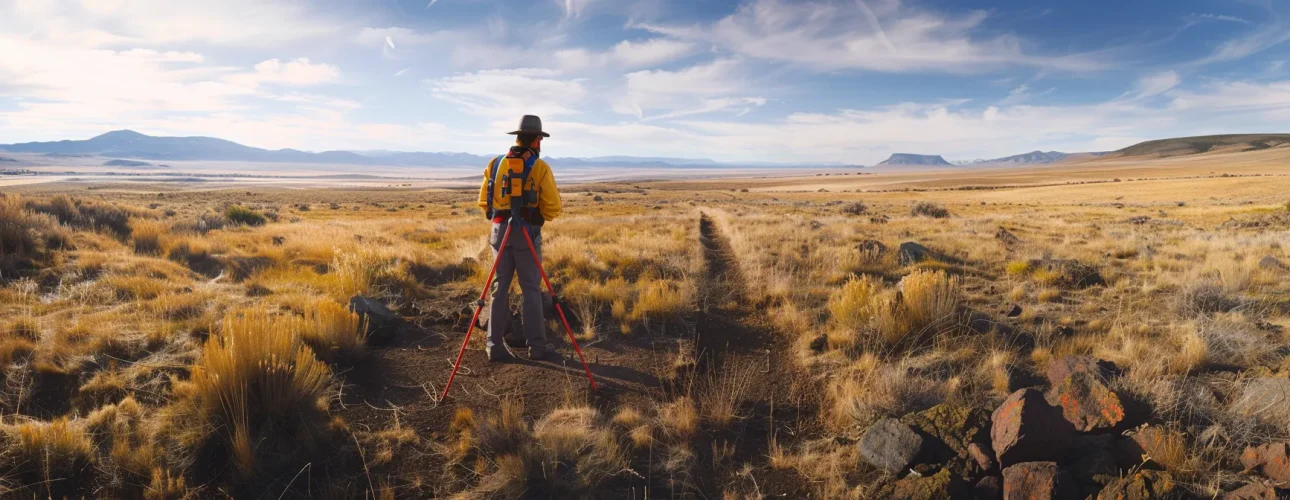Are you considering splitting your property in Utah but feeling overwhelmed by zoning laws, regulations, and the complexities of property division? This comprehensive guide will navigate you through the intricacies of subdividing your land, transforming your property into a valuable asset rather than a source of debt. You’ll learn how to assess the feasibility of dividing your lot, prepare for the land survey, understand local approval processes, and address environmental and community considerations. By engaging with this content, you’ll learn to handle zoning regulations, manage financial implications, and execute a successful sale while adhering to Utah’s legal framework and promoting smart growth within your community.
Key Takeaways
- Understand Local Zoning Ordinances: Familiarize yourself with municipal zoning laws and local ordinances before dividing land.
- Engage Professionals: Hire a licensed land surveyor and consult with a lawyer to accurately map property boundaries and navigate legal requirements.
- Financial Planning: Anticipate financial implications, including taxes, impact fees, and potential loan refinancing.
- Prepare Subdivision Plat: Craft a detailed subdivision plat for approval by the local planning department.
- Market Effectively: Partner with real estate professionals to effectively market and sell your subdivided lot.
- Community and Environmental Considerations: Address environmental concerns and engage with community members to ensure a smooth division and sale process.
Understanding Utah’s Zoning Laws and Property Division Regulations
Learning About Local Zoning Ordinances
When diving into real estate in Utah, grasping local zoning ordinances is pivotal. These regulations, which fall under municipal codes, dictate property use and density, influencing what you can and cannot do with your land. For example, if you aim to develop affordable housing, ensure the area’s zoning laws permit such projects. Understanding exclusionary zoning practices and variances is crucial to avoid legal disputes and ensure compliance with state and federal laws, such as the Civil Rights Act of 1968 and the Americans with Disabilities Act of 1990.
Steps to Align Lot Division with Zoning Ordinances:
- Review Zoning Classification: Determine permissible uses based on local zoning classifications.
- Check Easements and Covenants: Identify any property division restrictions that could impact your plans, such as easements or covenants.
- Consult a Land Surveyor: Accurately delineate property boundaries and identify physical constraints.
- Understand Tax Implications: Plan your finances by assessing property tax consequences and potential impact fees.
- Community Needs Assessment: Consider how your project can contribute to smart growth and meet community needs, such as providing affordable housing.
Identifying Property Division Restrictions in Your Area
Connecting with a knowledgeable real estate agent can be a game-changer when splitting and selling your lot in Utah. These professionals are well-versed in local property division restrictions and can help you navigate subdivision regulations, exclusionary zoning laws, and density requirements. They will also ensure you know about any planned unit developments (PUDs) and spot zoning issues that could affect your plans, saving you time and money and potentially leading to legal headaches.
Financial Considerations:
Determining the Legal Requirements for Lot Splitting
Understanding the legal requirements within your jurisdiction is paramount when splitting your investment into multiple lots. Utah’s regulations may require reviewing local ordinances, obtaining public hearings, or securing approvals from planning commissions. Suppose your situation involves aspects of family law, such as divorce or inheritance. In that case, additional legal scrutiny may be necessary to ensure the division aligns with community property guidelines and existing agreements.
Essential Legal Steps:
Assessing the Feasibility of Splitting Your Lot
Evaluating Property Size and Dimensions
Before judging your property’s potential for division, evaluate its size and dimensions to ensure compliance with Utah’s minimum lot size standards and local zoning laws. Consider accessibility to utilities and infrastructure, such as roads, water, and sewer systems, significantly impacting the viability of selling individual lots. Additionally, the area’s walkability and proximity to amenities like parks and schools should be assessed to enhance the lot’s marketability.
Checking for Compliance With Minimum Lot Size Standards
Could you verify that each prospective lot follows the minimum size standards set by local zoning laws? This is essential for obtaining a certificate of occupancy, which authorizes habitation and development. Overlooking this step could lead to costly negotiations or legal disputes, potentially stalling your project and affecting mortgage or settlement agreements.
Compliance Factors:
Considering Utility Access and Infrastructure Needs
Ensure that the divided lot has adequate access to essential utilities. Lack of access to water, electricity, or sewer systems can result in hefty impact fees to extend these services, affecting your financial planning. Additionally, evaluate the infrastructure needs, such as road access and drainage systems, to support future residents and enhance the property’s appeal.
Preparing for the Land Survey and Subdivision Process
Hiring a Licensed Land Surveyor in Utah
Engaging a licensed land surveyor is critical for accurately mapping your property boundaries and identifying any physical constraints, such as fault lines or flood zones. A professional survey ensures compliance with local zoning laws and provides clear evidence of property lines, essential for legal documentation and marketing purposes.
Steps to Hire a Surveyor:
- Identify Reputable Surveyors: Choose a surveyor with experience in Utah’s property laws and subdivision projects.
- Review Surveyor’s Report: Ensure the report includes detailed boundary information and potential easements.
- Incorporate Survey Costs: Factor the surveyor’s fees into your overall property division and development budget.
Creating a Subdivision Plat for Approval
A subdivision plat is a detailed map prepared by your land surveyor that outlines the proposed divisions of your property. This plat must comply with local zoning regulations and community planning goals. Collaborate with architects, civil engineers, and lawyers to ensure the plat accurately represents all physical features and adheres to building codes and environmental protection standards.
Steps to Create and Submit a Subdivision Plat:
- Finalize the Plat with Surveyor: Ensure all necessary details, including lot sizes and easements, are accurately represented.
- Legal Review: Have a lawyer review the plat for legal compliance and potential issues.
- Submit to the Planning Department: Provide the plat, documentation, and fees for approval.
- Prepare for Public Hearings: Be ready to address any community feedback or concerns during the approval process.
Submitting Applications to Local Planning Departments
When submitting your subdivision application, consider the financial implications such as capital gains tax and potential refinancing of existing loans. Seek legal advice to minimize your tax burden and manage all financial aspects effectively. Additionally, environmental safety should be addressed by appropriately handling hazardous waste and complying with regulations to avoid fines and ensure project profitability.
Approval Process Considerations:
- Capital Gains Tax: Plan for tax liabilities for selling subdivided lots.
- Environmental Safety: Ensure compliance with environmental regulations to protect natural resources and avoid legal liabilities.
- Planning Permissions: Secure all necessary planning permissions to facilitate a smooth approval process.
Navigating the Approval Process With Local Authorities
Addressing Feedback From Planning Commissions
Planning commissions may provide feedback requiring adjustments to your subdivision plans. Addressing these comments promptly demonstrates your commitment to adhering to community standards and urban planning principles. Collaborate with civil engineers and urban planners to refine your development strategy, ensuring your project aligns with smart growth and sustainability goals.
Meeting Conditions for Approval and Compliance
Document every aspect of your lot-splitting proposal meticulously, including risk assessments related to property tax evaluations and future compliance. Compliance with building codes, fire safety regulations, and earthquake preparedness is essential for securing approval and protecting your investment from potential legal challenges.
Understanding Timeframes and Potential Delays
Be aware that the approval process can be affected by factors such as the responsiveness of local authorities, the complexity of your project, and adherence to zoning laws. To keep your project on track, anticipate potential delays by consulting with experts familiar with Utah’s jurisdiction and maintaining proactive communication with planning departments.
Addressing Environmental and Community Considerations
Conducting Environmental Impact Assessments
Submitting an environmental impact assessment (EIA) is crucial, mainly if your property includes prime farmland or endangered species habitats. The EIA should detail how your development will affect the land and outline measures to mitigate negative impacts. Compliance with the Environmental Protection Agency (EPA) regulations and local environmental laws ensures sustainable development and reduces liability.
Engaging With Neighbors and Community Members
Proactively engage with neighbors and community members to build trust and support for your project. Discuss the benefits of your development, such as improved infrastructure or increased property values, and address any concerns related to traffic, noise, or environmental impact. Effective community engagement can prevent disputes and facilitate a smoother approval process.
Community Engagement Steps:
Mitigating Potential Objections or Concerns
Present well-researched evidence and sustainable development plans to anticipate and address objections to environmental protection, residential segregation, or community impact. Demonstrating a commitment to inclusivity and compliance with the Americans with Disabilities Act (ADA) can further alleviate concerns and foster positive relationships with stakeholders.
Preparing the New Lot for Sale
Ensuring Clear Title and Legal Documentation
Clear title and accurate legal documentation are paramount for attracting buyers and ensuring a smooth transaction. Work with a title company to perform a thorough title search, resolve any liens or encumbrances, and prepare a precise deed that reflects the new lot boundaries. This transparency builds buyer confidence and facilitates the transfer of ownership.
Enhancing Property Appeal for Potential Buyers
Ensure your lot is clean, accessible, and visually appealing to present as a prime investment. Consider professional landscaping, clear signage, and accessibility improvements to showcase the lot’s potential. To attract serious buyers, highlight unique features such as walkability, park proximity, or development-ready infrastructure.
Enhancements to Increase Appeal:
- Professional Landscaping: Showcase the lot’s aesthetic value.
- Informative Signage: Provide key details about the property.
- Accessibility Improvements: Ensure easy access through well-maintained paths or driveways.
Setting a Competitive Market Price
Determine a competitive market price by conducting a comparative market analysis (CMA). Evaluate factors such as location, lot size, development potential, and current market trends. A well-priced lot attracts more interest and facilitates a quicker sale, maximizing your investment.
Pricing Strategy Factors:
Successfully Selling Your Divided Lot
Marketing Strategies for Land Sales in Utah
Craft a compelling online presence using real estate platforms, social media, and your professional network to showcase your property’s unique attributes. High-quality photos, detailed descriptions, and informative content like PDFs or blog posts can enhance your listing’s visibility. Consider utilizing RSS feeds and email marketing to reach a broader audience.
Effective Marketing Tactics:
- Online Listings: Utilize platforms like Zillow, Realtor.com, and LinkedIn.
- Social Media Campaigns: Leverage Facebook, Twitter, and Instagram to reach potential buyers.
- Open Lot Events: Host events to allow interested parties to experience the property firsthand.
Working With Real Estate Professionals
Partnering with seasoned real estate agents and developers can streamline the sale process. These professionals offer market analysis, listing optimization, and access to a wide network of potential buyers. Their expertise in negotiation and closing processes ensures you secure the best possible outcome for your investment.
Benefits of Real Estate Professionals:
Negotiating Offers and Closing the Deal
You can approach negotiations strategically, considering each offer carefully against your financial objectives and market conditions. Effective negotiation can significantly impact the final sale price. Once an agreement is reached, ensure all legal and financial documentation is meticulously reviewed to facilitate a smooth closing process.
Closing Process Steps:
- Review Offers: Assess each proposal based on price, terms, and buyer qualifications.
- Negotiate Terms: Counteroffer to achieve favorable terms.
- Finalize Documentation: Ensure all legal documents, such as deeds and contracts, are accurate and complete.
- Close the Sale: Work with a title company and real estate attorney to finalize the transaction.
Frequently Asked Questions
1. What are the key zoning laws affecting lot division in Utah?
- In Utah, key zoning laws for lot division include minimum lot size, frontage requirements, density regulations, and adherence to local municipal codes, all critical for property development.
2. How do I determine if my lot is eligible for subdivision?
- To determine eligibility, consult local zoning laws, assess lot size, evaluate access to utilities and infrastructure, and consider environmental factors such as flood zones or wetlands.
3. What steps are involved in the land survey for lot splitting?
- A land survey typically involves researching property records, conducting fieldwork to establish boundaries, marking division lines, preparing a plat map, and submitting it for local approval.
4. Who do I need approval from for subdividing my property?
- Approval is typically required from your local planning department or zoning board, which ensures compliance with land-use regulations and community planning goals.
5. What factors should I consider before selling a newly divided lot?
- Consider zoning regulations, market conditions, access to utilities, environmental restrictions, potential land value appreciation, and ensuring clear legal documentation.
Conclusion
Navigating the complexities of splitting and selling a lot in Utah requires a deep understanding of local zoning laws, property division regulations, and community and environmental considerations. Engaging with land surveyors, lawyers, and real estate agents is essential for accurately delineating property boundaries, addressing legal and financial implications, and effectively marketing your subdivided lot. A strategic approach to marketing, negotiation, and compliance, backed by clear legal documentation, can significantly enhance the appeal of the divided lot and expedite the sale process. Thorough preparation and adherence to legal requirements are key to a successful real estate transaction in Utah’s dynamic property market.
By following this guide, you can transform your property into a profitable investment, contribute to your community’s growth, and ensure a smooth and legally compliant division and sale of your land.




